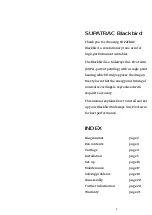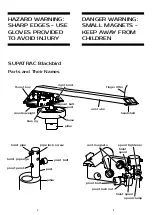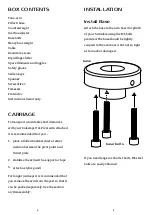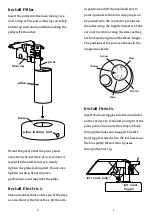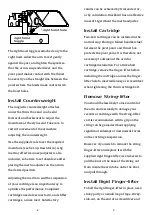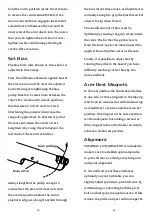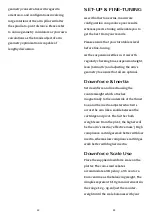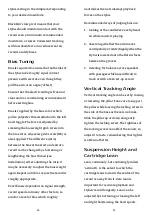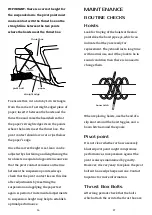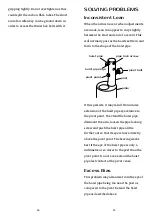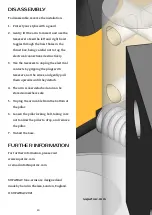
neutralises the net sideways playback
forces on the stylus.
Recommended ways of judging bias are:
1. looking at the cantilever exactly head-
on while music is playing
2. observing whether the arm moves
centripetally or centrifugally when the
stylus is lowered onto the flat surfaces
between the grooves
3. listening for balance across speakers
with passages which are difficult to
track or with a test/set-up record
Vertical Tracking Angle
Vertical tracking angle can be set by raising
or lowering the pillar. Take care to support
the pillar while loosing the locking screw in
the side of the base as there is no brake.
Slide the pillar up or down and gently
tighten the locking screw. The tightness of
the locking screw can affect the sound, so
adjust it to taste, remembering that tighter
is often not better.
Suspension Height and
Cartridge Lean
Lean, commonly, but confusingly called
‘azimuth’, is the extent to which the
cartridge leans towards the centre of the
record or away from it. Zero lean is
important for accurate playback and
stylus/record longevity. Lean can be
adjusted by shortening or loosing the left
and right hoists using the hoist spools.
15
stylus resting in the dimple corresponding
to your desired downforce.
Blackbird’s low pivot means that your
stylus should maintain contact with the
record even at minimum recommended
downforce, or lower. Consistent tracking
with low downforce can reduce wear on
records and styluses.
Bias Tuning
Bias is required to ensure that both sides of
the stylus have roughly equal contact
pressure with records even though they
pull the arm at an angle (‘offset’).
Ensure that the electric wiring is free and
clear and not constraining arm movement
before setting bias.
Bias is supplied by the bias rotor, which
pulls a polyester thread attached to the left
hoist toggle. The force is adjusted by
screwing the bias weight grub screw into
the bias rotor. A heavier grub screw (M6) is
also supplied. The difference (ratio)
between the bias at the start and end of a
record can be changed by shortening or
lengthening the bias thread (see
installation). After adjusting the ratio it
may be necessary to adjust the bias weight
again. Repeat until bias across the record is
roughly appropriate.
Exact bias is dependent on signal strength,
record speed and many other factors, so
aim for a level of bias which roughly
14


